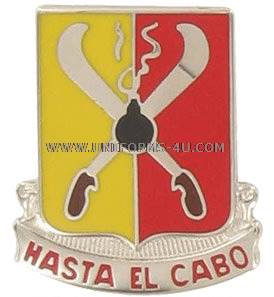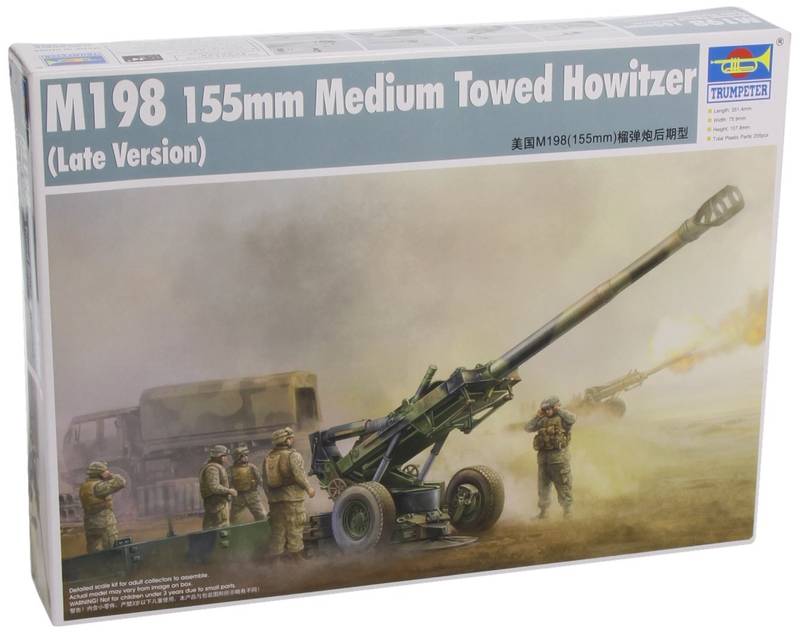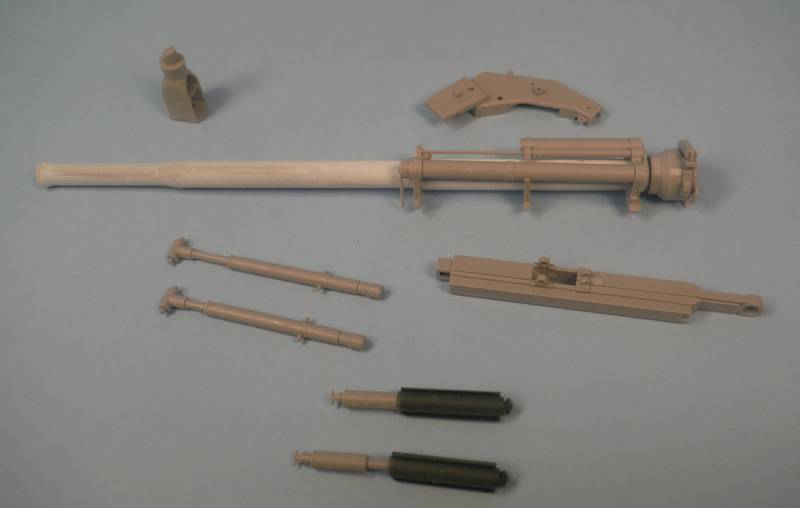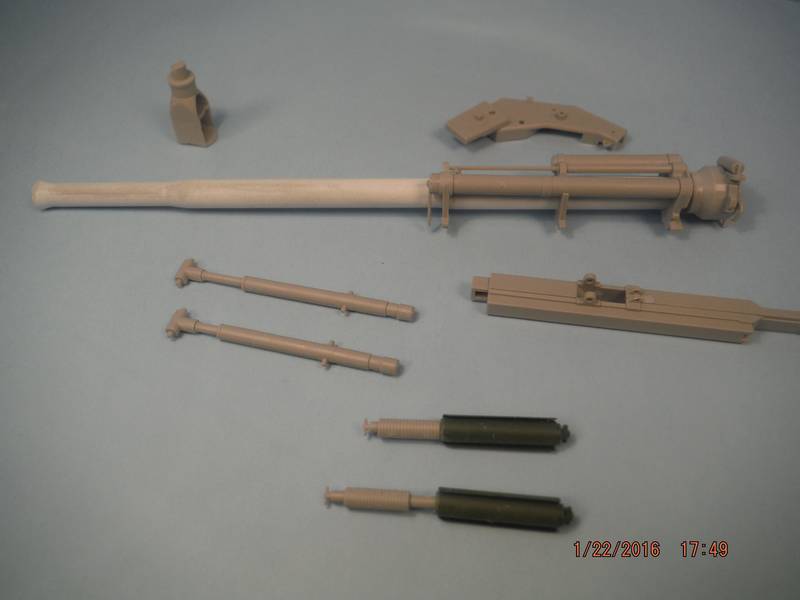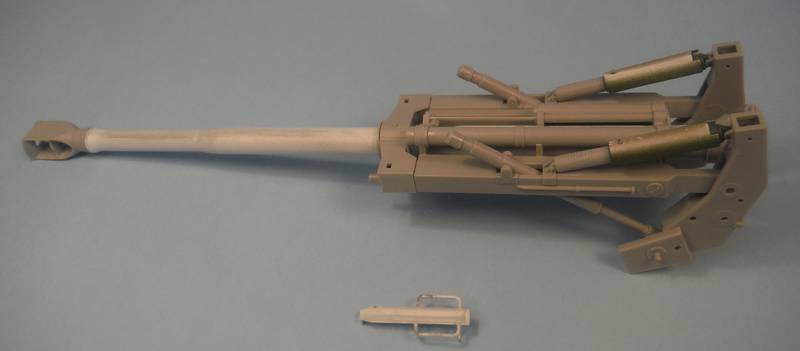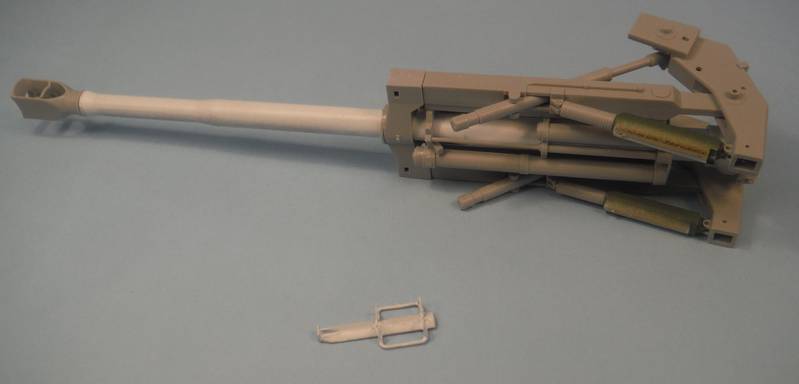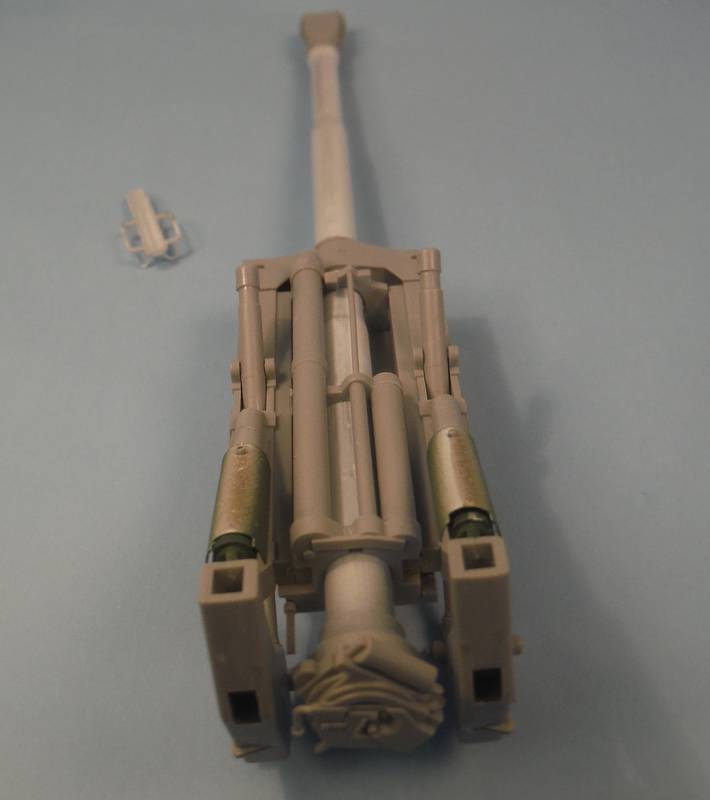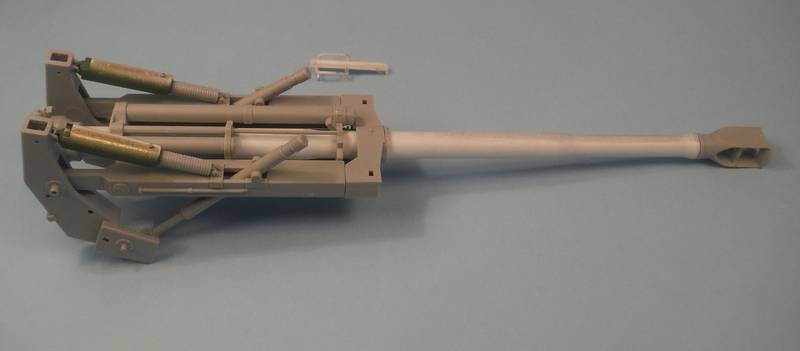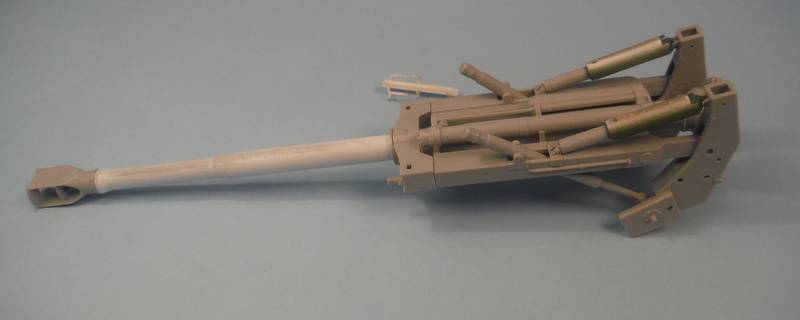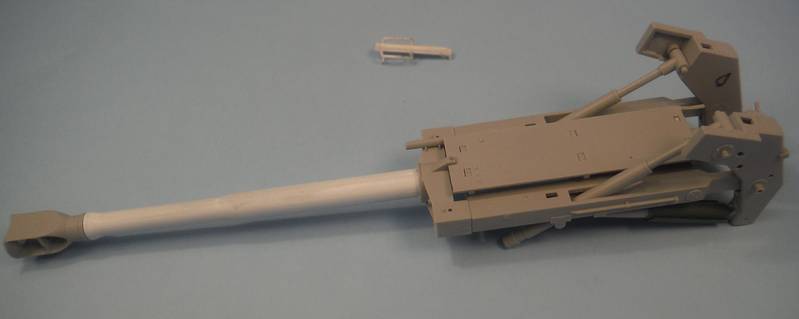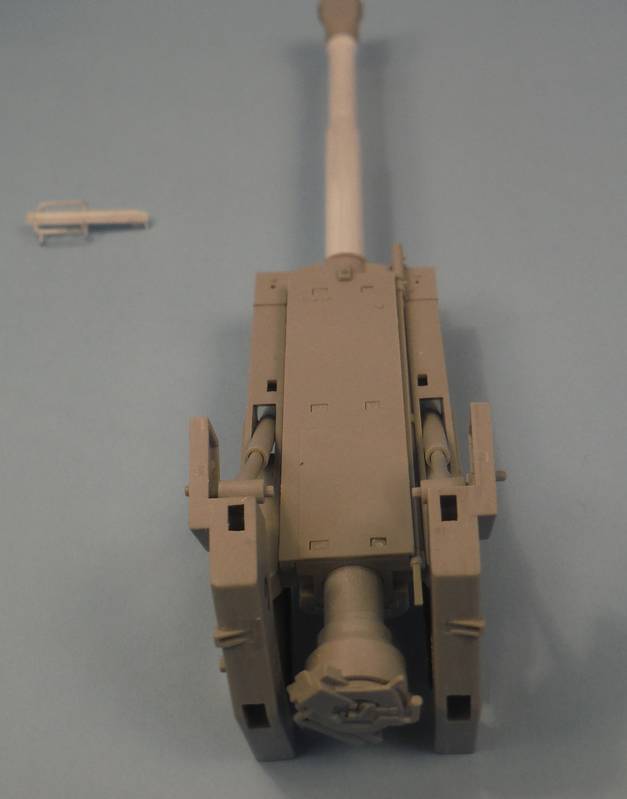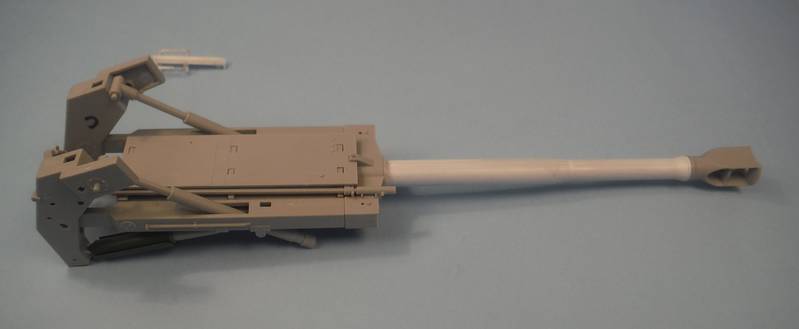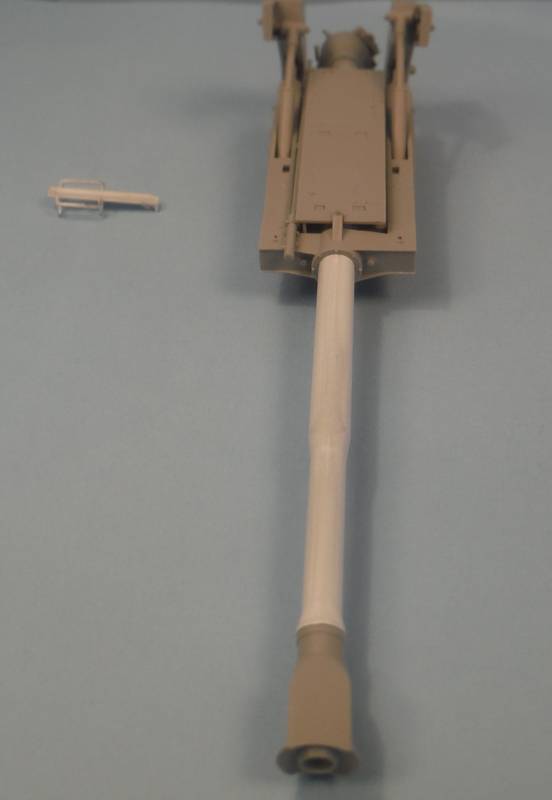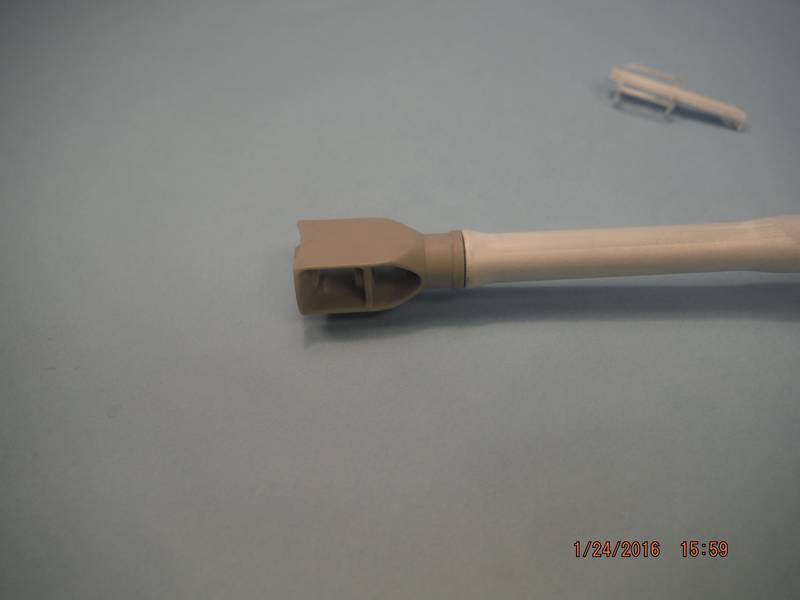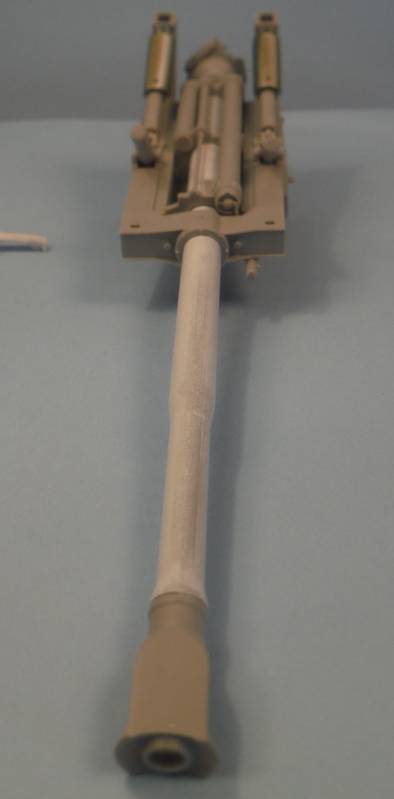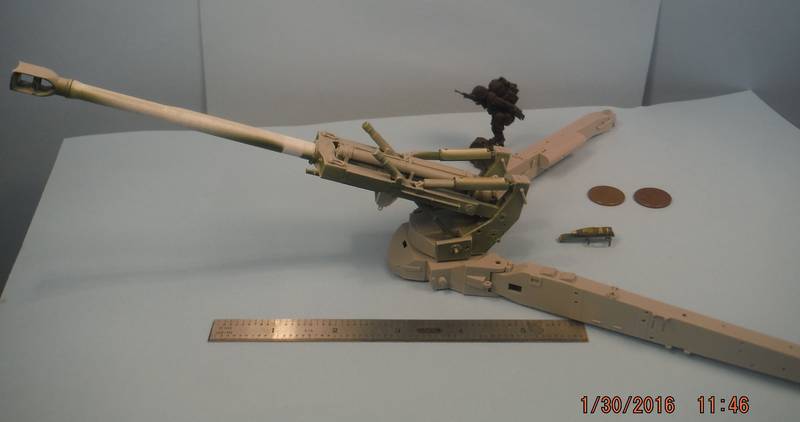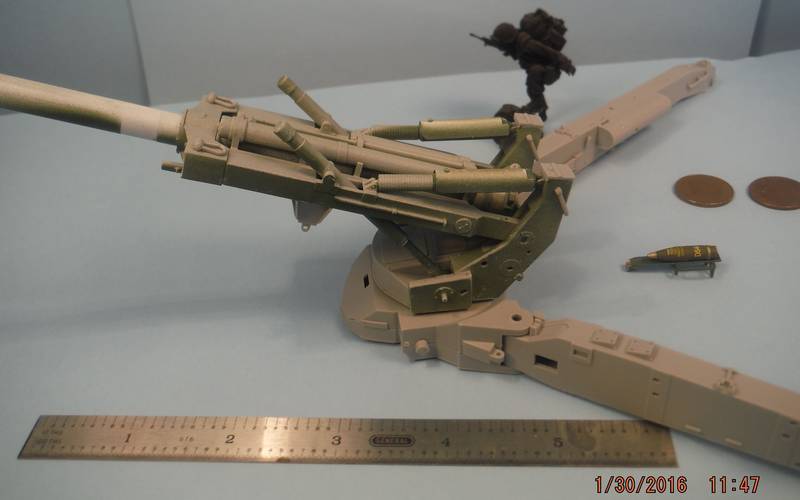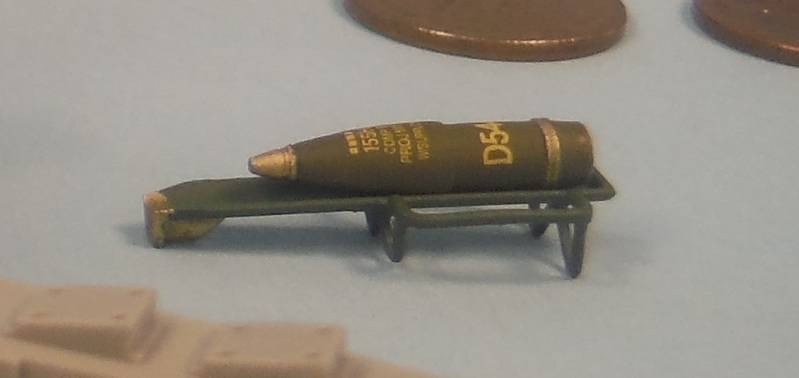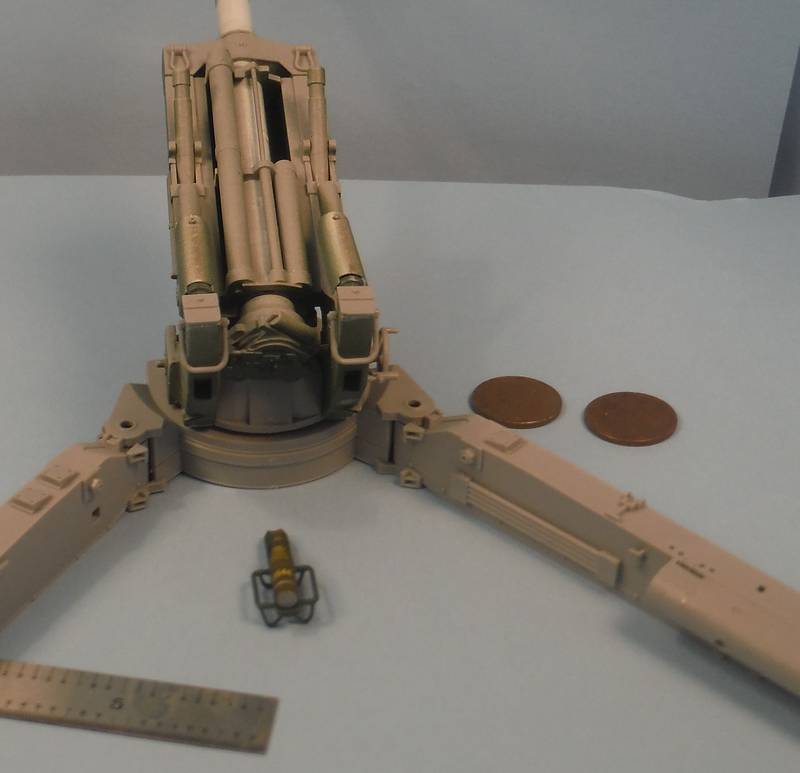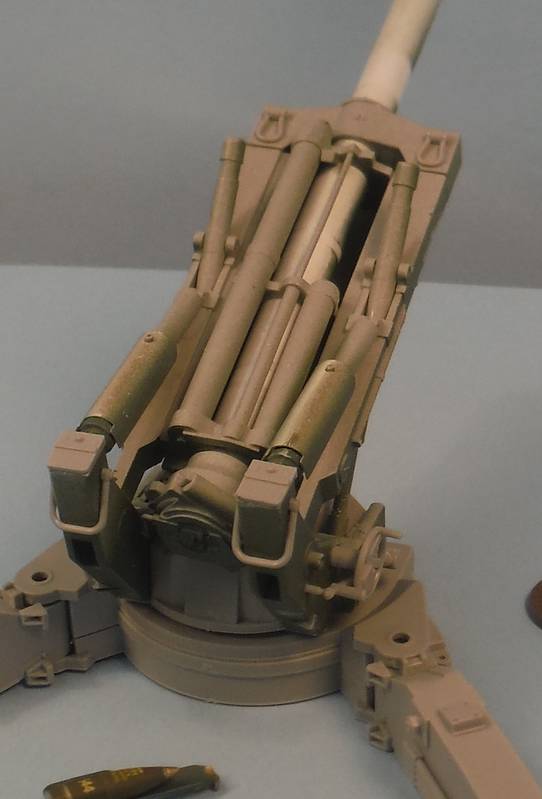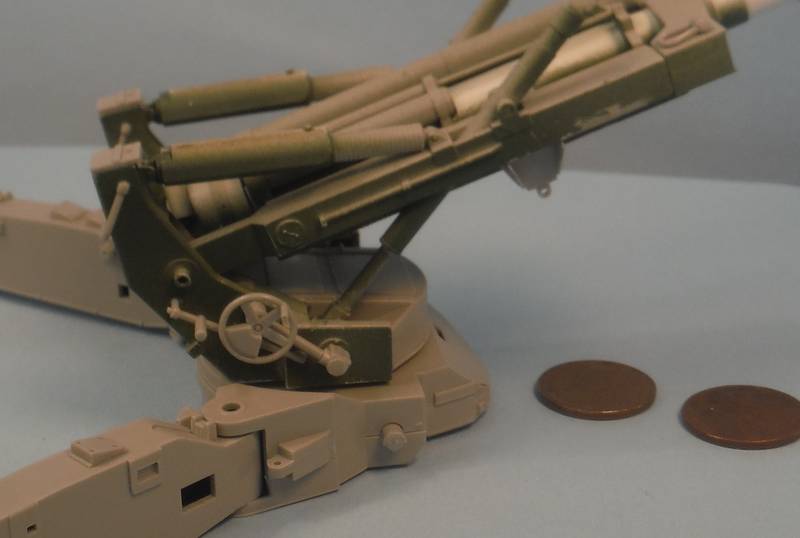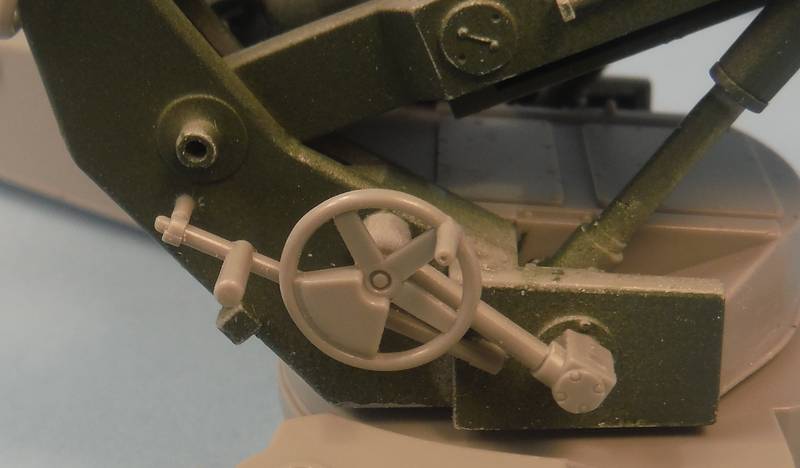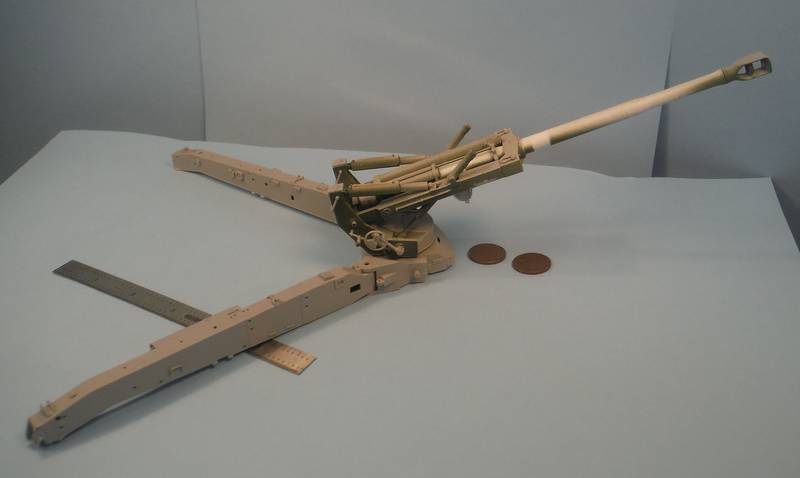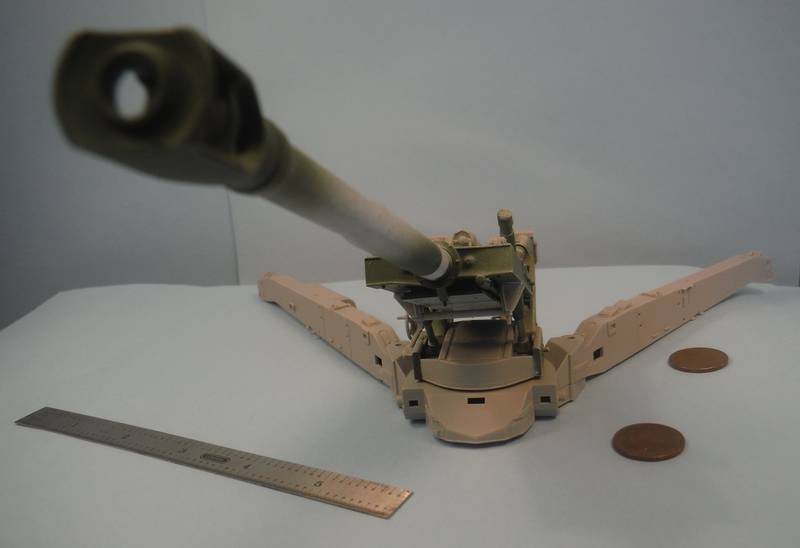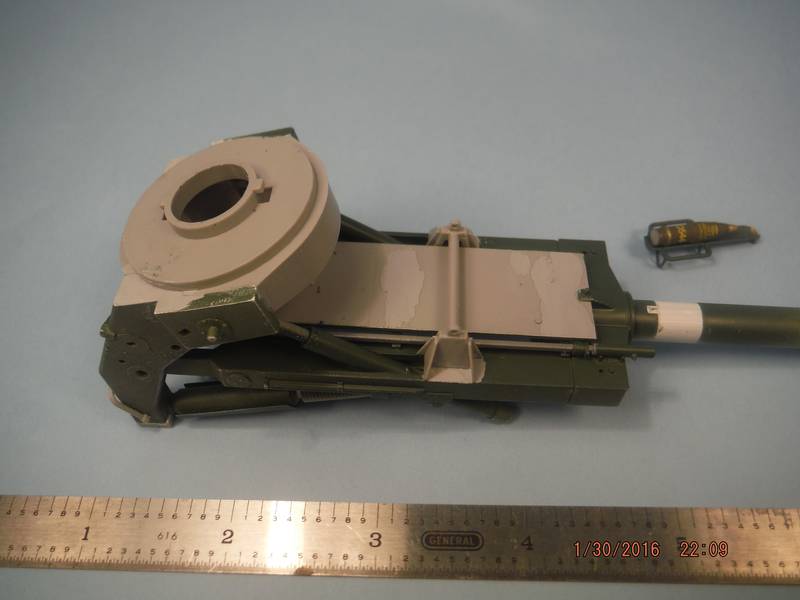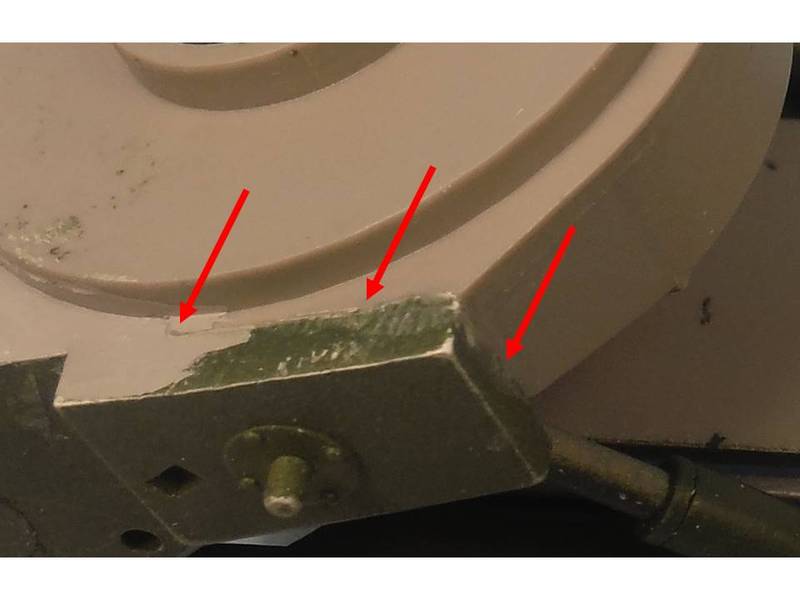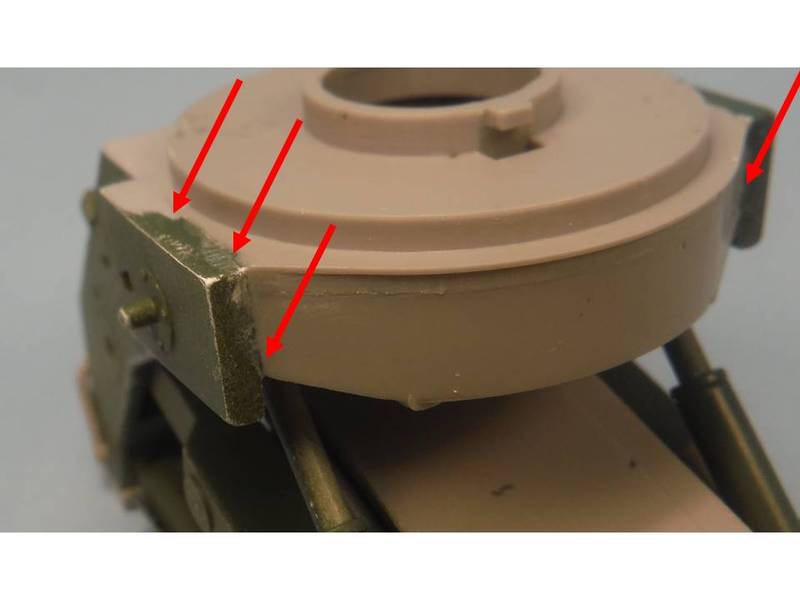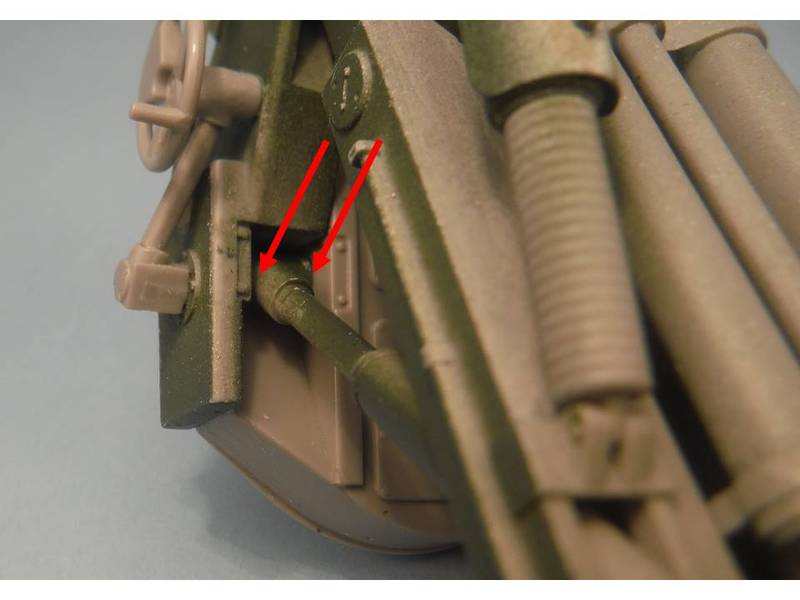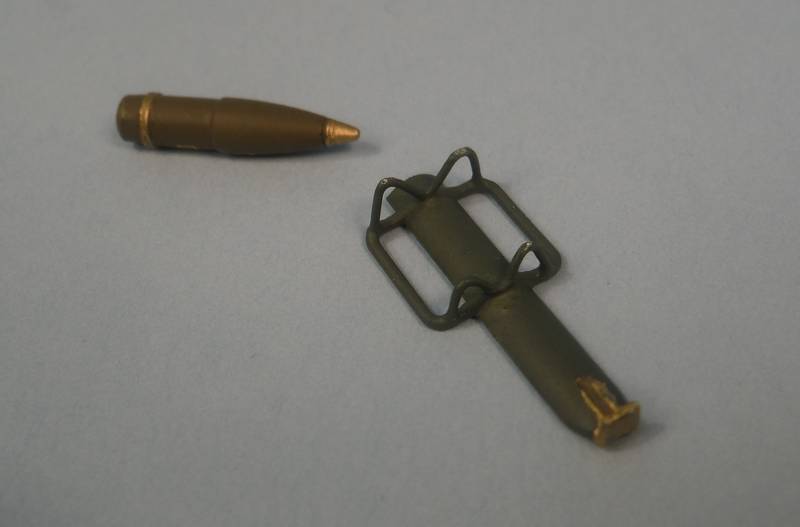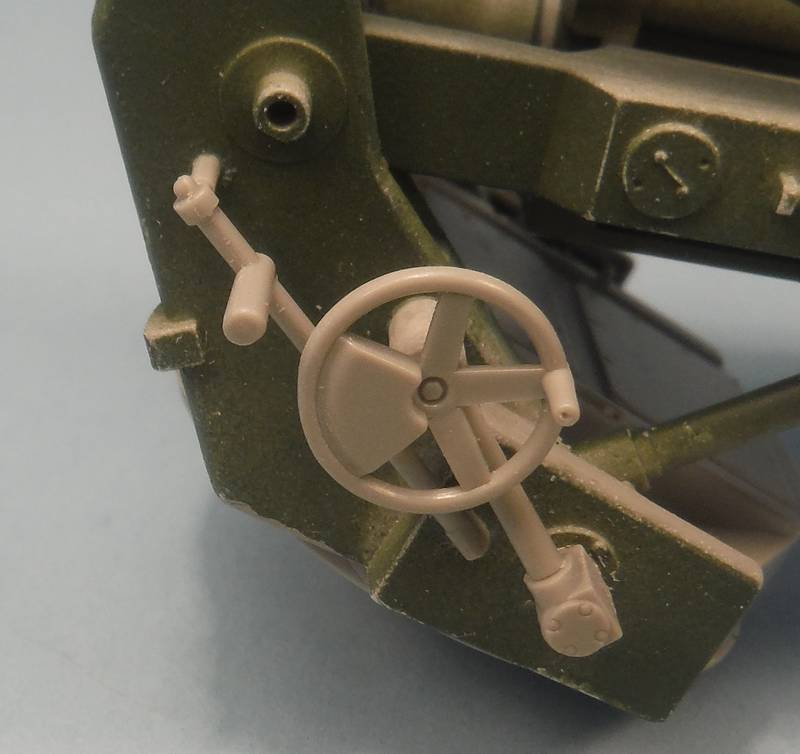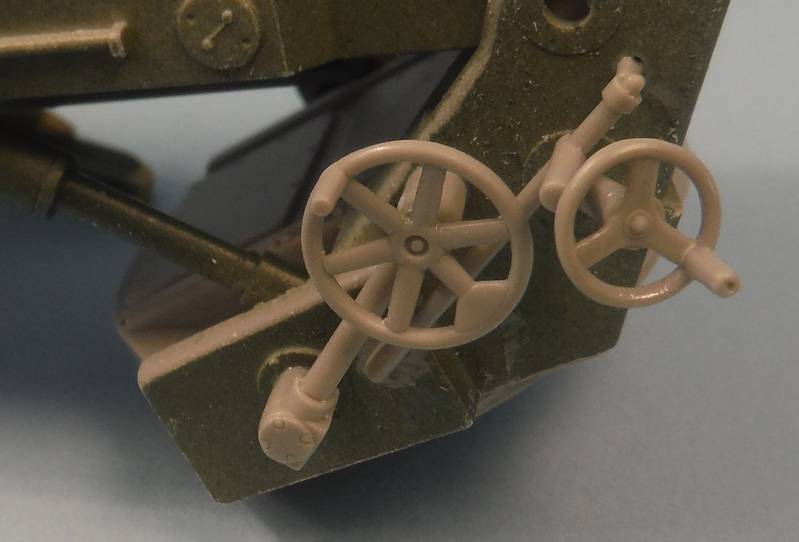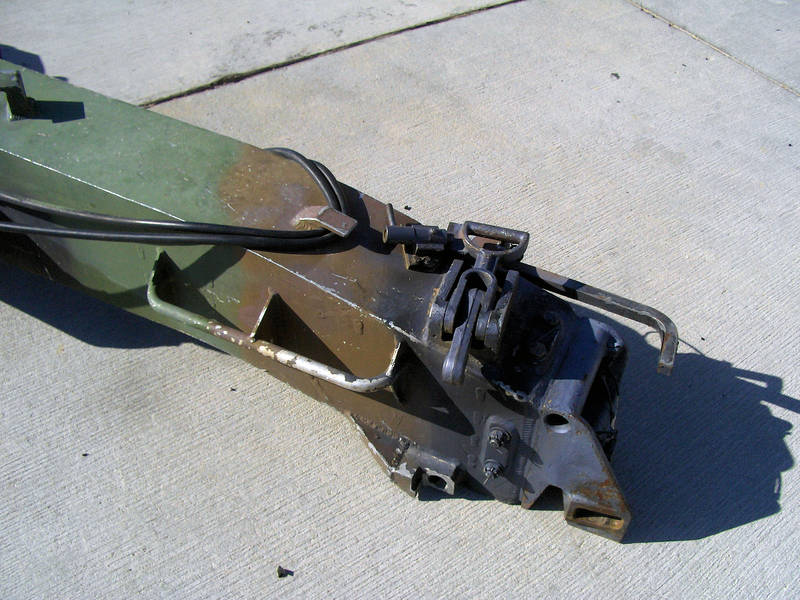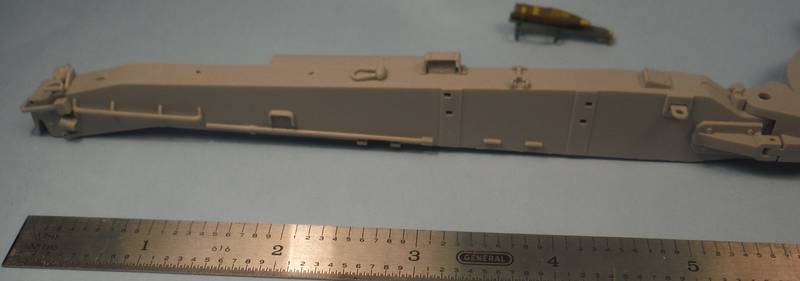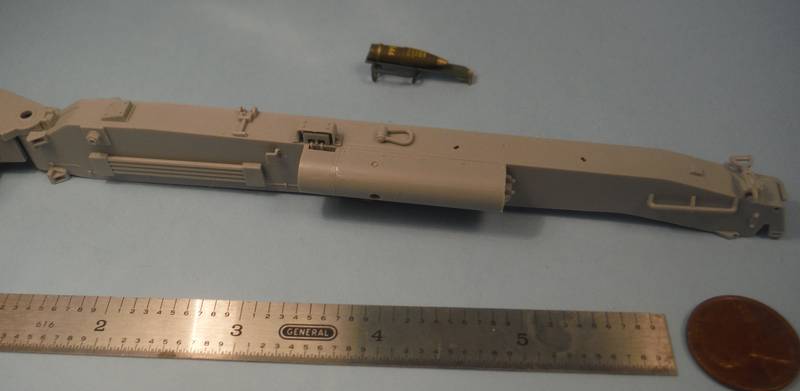Hi Stuart,
Glad to be of help. I'm sorry that I don't have any pictures for you. I was never much of a shutterbug. Yes, we always hung the primer belt on the right lift ring. Our truck driver didn't touch any of the gun or comms gear. During firing, the headsets would be worn by the section chief or a member of the gun crew to the left of the left trail. Nobody was allowed to sit on the trails during firing. Depending on soil conditions, you could get killed or maimed. By the way, I was USMC, not Army...they would have done some things differently.
During firing, shells were kept behind the left trail, and powder behind the right. During peacetime, shallow pits were dug in which powder and shells were stored upright to the height of the powder canister or eye-ring of the shell. During Desert Storm, we didn't have time for shell pits, and stood everything up on end as we used it.
In peacetime, no live shells or powder was carried on the gun truck. During Desert Storm we carried the shells upright in the center of the truck, on their original pallet, strapped down with ratchet straps. Powder was carried on the very rear on it's original pallet base with wooden separators from the pallet allowing us to stack powder almost to the top of the truck.
The ratchet straps were unmodified. The straps were either olive, white, or yellow with the metal ratchets unpainted. See your local hardware store for the peculiar color of the ratchets.
The powder and shell pallets, when new, were bound by 1 inch wide black steel straps we cut with bolt cutters. They always made an ugly mess to either side of the truck which stayed only a few feet behind the rear of the trails. The wood of the shell and powder pallets was very pale. I never determined what kind it was. There were never any knots to see.
Our Alice packs were hung on the wooden racks of the 5-ton, hanging outside. During Desert Storm, rectangular canvas desert water bags were hung from either the mirrors or one of supports on the bed of the truck. We never needed more than 2 of the bags, and the use was communal.
Every gun crew had a rectangular metal chest, usually painted black, but regularly chipped through use, and the repainted. It carried all of the pioneer tools, cleanin rods, fuse wrenches, rammer staff pad, bolt cutters, comms gear.
It had a d-shaped lifting handle at each end. Dimensions were roughly 4 feet by 18 inches by 18 inches.
The rammer staff was two pieces of gun cleaning rod with the rubber capped rammer staff pad. During firing, the rammer staff rested with the pad at the rear end of the shell tray. Tray, shell, and rammer staff were lifted in unison, brought forward in fluid motion with the rammer shoving the shell deep into the breech until the brass rotating bands seated into the rifling of the barrel.
The edges of the rammer staff pad had once been blackened aluminum. The outer ring was worn clean of bluing or blackening during the ramming process, and not repainted. The cleaning rods/rammer staff was blackened aluminum, not painted. Maybe blued would be better understood than blackened.
That's a bit more detail for you.
Cheer,
Gary
